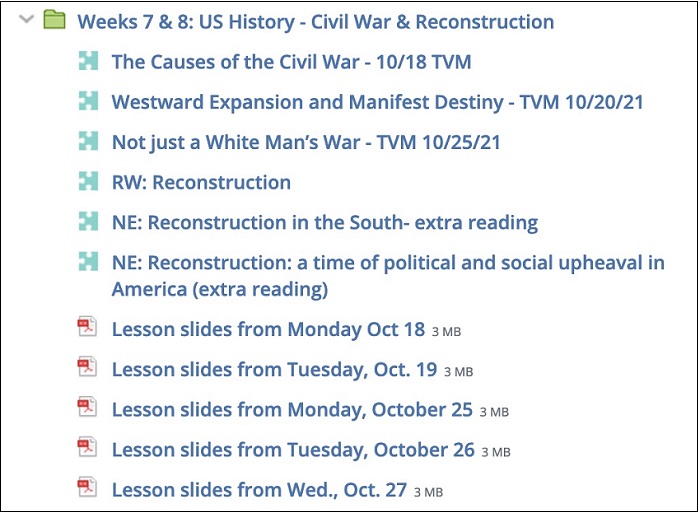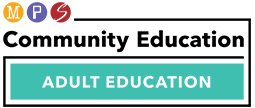- MN ABE Connect
- Archive
- Using a Learning Management System (LMS): Coffee Break Takeaways
 December 6, 2021
December 6, 2021
Using a Learning Management System (LMS): Coffee Break Takeaways
Heather Turngren, Minneapolis Adult Education Teacher / ATLAS Adult Career Pathways CoordinatorUsing an LMS was one of the Coffee Break sessions at the recent ATLAS Fall 2021 ABE Conference: Still Here, Still Awesome! But what is an LMS?
A learning management system is often called an LMS for short, and it is a software application that provides the framework that handles all aspects of the learning process. It’s where you can store, deliver, and track your instructional content.
The Using an LMS session allowed for a discussion among ABE professionals in an informal setting about the benefits of an LMS, LMS platforms used in ABE programs in Minnesota, and other topics.
Benefits of an LMS
The Coffee Break discussion touched on some of the advantages of using an LMS in the ABE classroom. Shared below are some of the benefits to students, teachers, and programs that participants discussed or highlighted.
An LMS supports…
- guiding students to an easy transition to LMS platforms used in higher education institutions
- sending notices, flyers, and messages to the whole class – particularly helpful during Covid-19
- storing the class syllabus or calendar to help students’ planning
- providing more opportunities for student engagement
- supplementing classroom instruction
- creating, delivering, and gathering class content, including assessments
- delivering asynchronous and synchronous learning – useful for TVM lessons
- accessing class or course content in a more equitable manner
- providing feedback on student learning
- allowing for differentiated instruction and learning
LMS Platforms
Participants noted that some ABE programs have an LMS for the entire program and other programs may have a few teachers use their own free version of an LMS for their classroom. It’s suggested that you first check with your program’s IT/IS department to determine which program is best for your classroom.
Participants also had a few questions about the cost of an LMS. It is difficult to determine the cost of each LMS; however, the links included here should help you determine prices or request a quote. This newsletter article is not an indorsement of any particular LMS; below are a few platforms teachers shared and discussed:
- Google Classroom is an LMS used by many who attended the Coffee Break. It is “… a free blended learning platform developed by Google for schools that aims to simplify creating, distributing, and grading assignments.” [Source] Google Classroom is free with 100GB of storage and no limits on the number of users. Users will have to create their own content to use in Google Classroom.
- View the steps to easily create a Google Classroom for your class.
- Canvas is another LMS discussed in the Coffee Break. Participants enjoyed an impromptu virtual tour of a participant’s math class in Canvas. Canvas is an “open source LMS solution built to accommodate both K-12 and higher ed institutions.” [Source] There is a Free-for-Teacher option that allows you to have 500MB of storage per course with limited support. Canvas allows users to both create their own content and to bring in shared content from other users.
- View a short step-by-step video on how to step up a teacher account in Canvas.

- Schoology is an LMS that was also used in a virtual tour during the Coffee Break. I showed some of the work I have for the HSE Reading for Social Studies course I currently teach. “Schoology combines instructional tools, assessments, collaboration features, and advanced analytics into one comprehensive LMS platform.” [Source] The Basic package of Schoology is free for instructors and learners. Schoology allows users to create content and to also bring in content created and share from other users. I noticed that students who had been using the LMS in my class prior to March 2020 had an easier experience of transitioning to online learning.
- Desire to Learn (D2L) is an LMS used primarily by Minnesota State Colleges and Universities. In mid-November 2021, Minnesota State D2L was upgraded to D2L Brightspace which has been “created by the organization D2L (Design2Learn), it includes course management, learner engagement, student tracking, course creation and multimedia support.” [Source] During the Coffee Break session, we discussed how using a platform that is used in community colleges would benefit ABE learners as they transition to higher ed.
- Blackboard is used by many higher education institutions in the U.S. “Blackboard Learn is a highly customizable online learning application that allows users to take or host online courses. Students and teachers can interact using assignments, video conferencing, discussion groups, tests, and more in Blackboard Learn and its upgraded version, Ultra.” [Source]
- American Prison Data Systems (APDS) was noted by a participant as an LMS used by the Minnesota Department of Corrections. APDS “enables the secure delivery of digital content and digital services to US jails and prisons with a software-as-a-service business model, served on their tablets, over a private wireless network, in addition to curating content for delivery.” [Source]
LMS Resources
Along with the links above, here are some other resources shared during the Coffee Break session:
- LINCS Integrating Technology is an online community of practice for discussions and resources on integrating technology into the ABE classroom.
- The University of Tennessee has a site with tips on optimizing an LMS.
- Resources for Transitioning to Online Learning is a Google document created and shared during the Covid-19 pandemic. There is still useful tips and information.
Notes from the Coffee Break: The information discussed and shared during the Coffee Break session was recorded on a Padlet, which is an online bulletin board tool. In the Padlet, you can view what participants had to say as well as leave your own comments.
Teachers noted that using an LMS takes some effort up front to establish; however, the outcome is immeasurable for student learning, engagement, and success.

Newsletter Signup
Get MN ABE Connect—the official source for ABE events, activities, and resources!
Sign UpArticle Categories
- ABE Foundations/Staff Onboarding
- ACES/Transitions
- Adult Career Pathways
- Assessment
- CCR Standards
- Citizenship
- COVID-19
- Cultural Competency
- Digital Literacy/Northstar
- Disabilities
- Distance Learning/Education
- ELA
- Equity/Inclusion
- ESL
- HSE/Adult Diploma
- Listening
- Math/Numeracy
- Mental Health
- Minnesota ABE
- One-Room Schoolhouse/Multilevel
- Professional Development
- Program Management
- Reading
- Remote Instruction
- Science
- Social Studies
- Speaking/Conversation
- Support Services
- Teaching Strategies
- Technology
- Uncategorized
- Volunteers/Tutors
- Writing